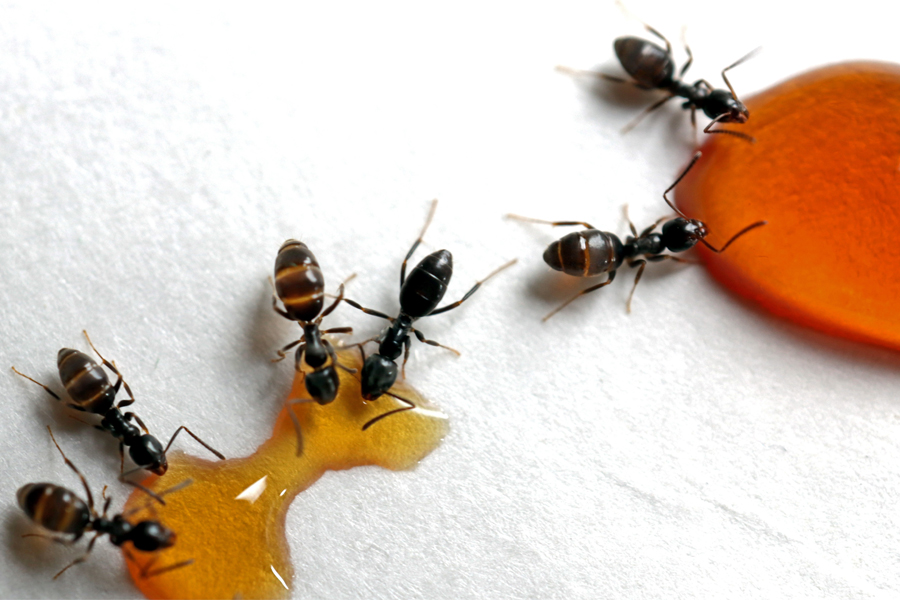‘Walk this Way’: FSU researchers’ model explains how ants create trails to multiple food sources

It’s a common sight — ants marching in an orderly line over and around obstacles from their nest to a food source, guided by scent trails left by scouts marking the find. But what happens when those scouts find a comestible motherlode?
A team of Florida State University researchers led by Assistant Professor of Mathematics Bhargav Karamched has discovered that in a foraging ant’s search for food, it will leave pheromone trails connecting its colony to multiple food sources when they’re available, successfully creating the first model that explains the phenomenon of trail formation to multiple food sources.
Karamched, who also serves as faculty in FSU’s Institute of Molecular Biophysics, and music arts administration graduate student Sean Hartman, published “Walk This Way: Modeling Foraging Ant Dynamics in Multiple Food Source Environments” in the Journal of Mathematical Biology in September.
“The power of mathematics is that we can devise models that reproduce experimentally observed data and make concrete predictions about what will happen next,” Karamched said. “In this case, we uncovered something that hasn’t been described well by other models: if an ant has access to multiple food sources from its nest, it will initially make multiple trails to each of the sources.”
Karamched uses modeling, mathematical analysis and computer simulations to understand and solve problems in neuroscience and cell biology. Hartman, who earned dual bachelor’s degrees from FSU’s Department of Mathematics and College of Music in May 2023 and expects to complete his graduate studies this spring, approached Karamched about assisting with a Directed Individual Study (DIS). DIS allows students in FSU’s Honors Program to work one-on-one with faculty mentors in an open-ended, hands-on research experience and would allow Hartman to be more involved with mathematical modeling.
The post ‘Walk this Way’: FSU researchers’ model explains how ants create trails to multiple food sources appeared first on Florida State University News.
Latest FSU News
- New Campaign Urges FSU Students to Keep Their Heads UpThe post New Campaign Urges FSU Students to Keep Their Heads Up appeared first on Florida State University News.
- Behind the Scenes: ACC Inventure PrizeThe post Behind the Scenes: ACC Inventure Prize appeared first on Florida State University News.
- FSU supports students, faculty, and staffThe post FSU supports students, faculty, and staff appeared first on Florida State University News.
- Access important resources and updates with FSU Response websiteThe FSU Response website is your go-to resource for the latest updates on health and safety at Florida State University. […] The post Access important resources and updates with FSU Response website appeared first on Florida State University News.
- FSU to celebrate resilience, record-breaking graduating class at spring commencementFlorida State University will celebrate remembrance, resilience and achievement as its largest graduating class in history receives degrees during Spring […] The post FSU to celebrate resilience, record-breaking graduating class at spring commencement appeared first on Florida State University News.
- A Message from President McCullough about Spring CommencementDear FSU Family, Next week, we’ll come together to celebrate commencement, one of the most joyful traditions in university life. […] The post A Message from President McCullough about Spring Commencement appeared first on Florida State University News.







